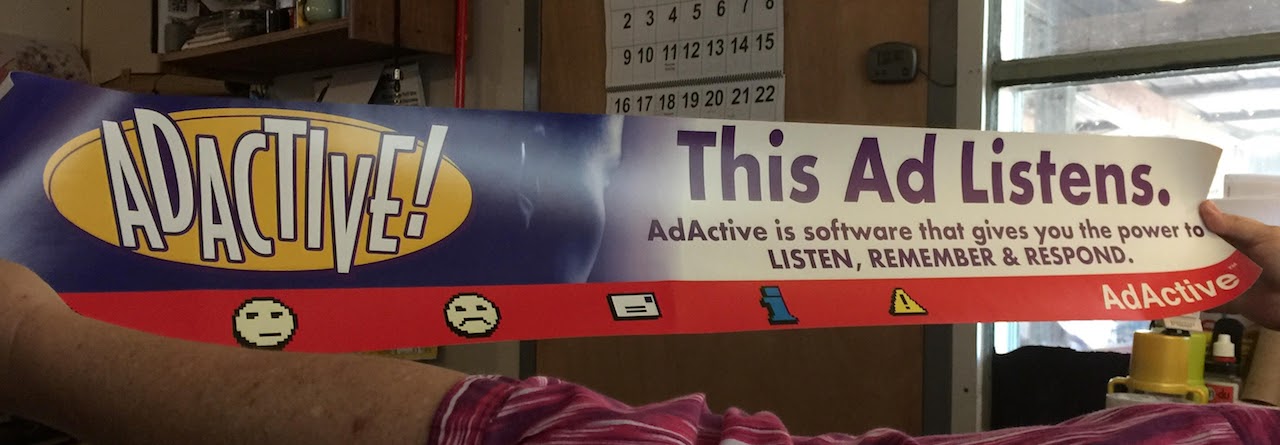In my dozen years in small town radio I wrote a lot of commercials. Mostly thirty-second “spots” but lots of :60’s (more expensive). It wasn’t uncommon to finish a four-hour on-air shift and sit down at a manual typewriter and bang out ten or fifteen “spots” working from a newspaper “tear sheet” or a salesperson’ scribbled notes. And most of these commercials were scheduled to begin airing the following day so someone had to get in the studio and produce the ad. Point being, there was little demand or time for creativity and the sponsor wasn’t inclined to pay for it in any event.
For a variety of reasons, a :30 second ad had to be :30 seconds. Not 27, not 32. So we followed a rigid format. Given a normal reading speed, a thirty second ad was about 75 words, usually eight lines. Yeah, you could try to get cute and clever but the client wanted to hear about his business. His products or services. And if the client was a supermarket… price-and-item. As many as you could jam in.
So, no, this was rarely creative writing. It was short, simple, declarative sentences. Not a word or phrase to be wasted. I like to think I still write this way.
When email took over from letters and faxes people wrote long-winded tomes that went on for paragraphs. I went through a phase where I would put my entire message in the subject line with “see above” in the body. If it needed more space than that, I would call them or go see them. To this day I think of this approach as “write like you talk.” Which was the final test for radio commercials: reading the copy aloud before going into the studio.





 In the late 90’s I played a small part in
In the late 90’s I played a small part in